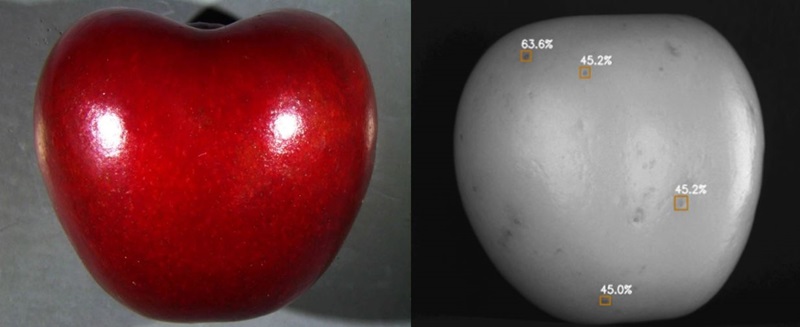The Queensland fruit fly (Bactrocera tryonil), known for its highly invasive nature, is one of the most troublesome pests in Australian horticulture.
It is estimated that these small insects cost the economy around 300 million dollars each year due to crop damage and market loss. Australia has a strong reputation for managing fruit fly biosecurity risks, and advancements in technology can create new opportunities to streamline our methods.
This is why we have developed a sensor-based imaging technology called “optical scanning”. This groundbreaking technology can rapidly analyze fruits, such as cherries and blueberries, to detect pest damage.
Dr. Maryam Yazdani is the lead scientist behind the optical scanning technology. Her background is in entomology.
“One of the biggest hurdles in exporting fresh Australian fruit is the biosecurity issues related to fruit fly infestation,” said Maryam. “They are not strong fliers, but they can hide in fruits and vegetables.”
Final treatments like fumigation, along with manual inspections, are currently used to manage infestation risks. “Final treatments are effective, but we aim to demonstrate how alternative technologies like sensors and imaging can help reduce biosecurity risks in fruit destined for export,” Maryam explained.
For instance, integrating or replacing manual inspections can enhance efficiency. “The issue with fruit fly pests is that they can be difficult to detect in fruit, so we are looking for ways to make things easier for our growers, trade partners, and biosecurity systems.”
Alternative techniques like optical scanning help prevent fruits that might carry unwanted pests from entering supply chains. This could open new export opportunities for growers.
Maryam's approach combines imaging technology with artificial intelligence for the rapid and automatic detection of pests. The technology can be added to existing optical sorters commonly used in fruit packing houses, making it a highly efficient solution.
 Image 1: Optical scanning reveals fruit fly infestation in a cherry, otherwise invisible to the naked eye.
Image 1: Optical scanning reveals fruit fly infestation in a cherry, otherwise invisible to the naked eye.
Optical scanning creates a high-resolution image of the fruit’s outer structure to assess pest damage. The new technology can detect damage, such as the egg deposition of fruit flies in cherries, with over 90% accuracy. These eggs are difficult to visually detect, even by expert observers. The improved data can be directly fed into biosecurity systems and processes.
Read the full article: CSIRO
Images: CSIRO
Cherry Times - All rights reserved













